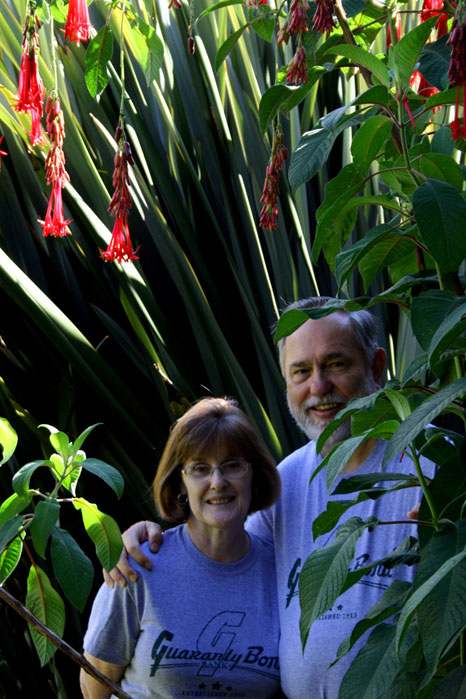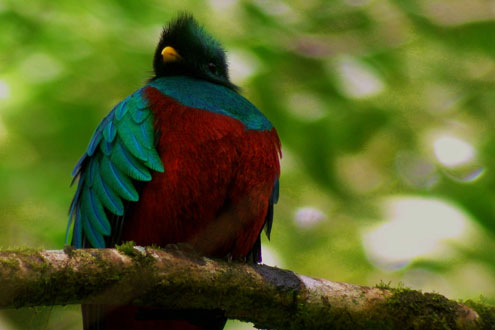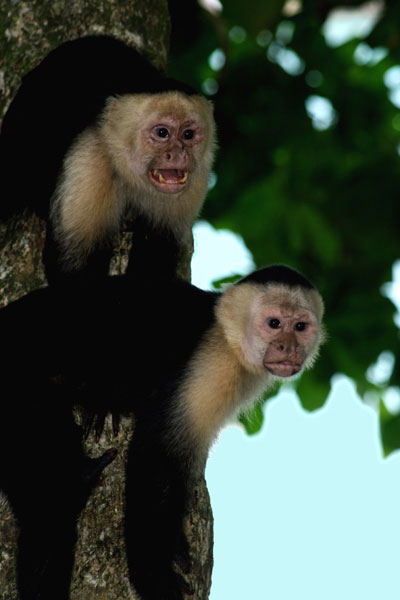Alton Biggs recently served as the trip leader for a teacher group exploring the ecology of Costa Rica.
COMMERCE, TX – You don’t see many monkeys in Commerce. That’s why one Commerce resident recently traveled more than 2,000 miles to point them out for a group of teachers and friends.
Alton Biggs just returned home with his wife Louise from leading a trip to Costa Rica. Among the participants were biology teachers, a nurse, an editor and even one of Mr. Biggs’s previous students. The group of seventeen flew from Dallas, Houston, St. Louis, Missouri, and Columbus, Ohio to San Jose, the capital of Costa Rica. Costa Rica is a country with an often studied ecology. It has an enormous diversity of plants, animals and their habitats.
This was Mr. and Mrs. Biggs’s second trip to the Central American country. They first visited in 2008 with another group of teachers from the Texas Association of Biology Teachers. TABT and the National Association of Biology Teachers have sought him out to lead their expeditions for beginning in the mid-1980s.

Alton Biggs and his wife Louise enjoyed the lush vegetation and the cool climate of Costa Rica’s cloud forest.
photo courtesy Karla Dean
“I am fascinated by far away places and their cultures,” Mr. Biggs said. “Costa Rica is an exceptional place to visit.”
“I have had amazing experiences in my travels, which have included going on safari in Africa, seeing Anne Frank’s house in Holland, camping out in the rainforests of Australia and venturing on an expedition to Antarctica aboard an ice strengthened ship. However, I’ve seen more different animals and plants in Costa Rica than just about anywhere,” he continued.
The animals of Costa Rica include leaf cutter ants and jungle army ants, four species of monkeys, over 800 species of birds and many species of frogs, sea turtles, and unusual mammal. Biggs said he was always excited to see such unique animals in their natural habitat, knowing that they cannot be found anywhere else in the world.
He indicated that in Costa Rica he met birds called the resplendent quetzal, the motmot and violet saber-wing hummingbird. Biggs says they are equally interesting and beautiful birds with differing feeding and breeding habits.

Few people get to see the resplendent quetzal, a bird revered by Pre-Columbian Mesoamerican civilizations.
photo courtesy Alton Biggs
In addition to many different birds, he encountered a variety of insects, reptiles and mammals. The slow-moving three-toed sloth and the quick spider monkeys provided quite a show.
“On this trip I really wanted to see white-faced or ‘capuchin’ monkeys,” Biggs said. “They forage for food in groups and we saw them in Manuel Antonio National Park. These monkeys eat insects, lizards, eggs and even small snails, but they came down out of the trees to search for food among our possessions at the beach. We had to appoint members of the group to alternately stand guard to protect our cameras and clothes while we swam in the Pacific Ocean!”

White-faced capuchin monkeys lives in lowland forests and mangrove swamps of Central America. Inquisitive animals, the monkeys will come down out of the trees to steal unprotected food and other items from humans.
photo courtesy Alton Biggs
The jewels of Costa Rica are its hummingbirds and butterflies. Biggs said his group visited a butterfly “ranch” where hundreds of butterflies from several species were grown for collectors, weddings and other events. In one location the group watched hummingbirds fighting for a spot at the feeders. Both events stood out for Biggs.
In addition to mountain and lowland rainforests, the group visited several other important sites. They ventured close to Arenal, an active volcano, at one point and took a dip in the hot water springs. From their vantage point on its slopes Biggs reported that he and his group could see a black cloud of poisonous gases rising from the top of the volcano. Another time they visited the coastal area.
Biggs said they took a tour of a local farm at one point and a coffee plantation in another. The vegetable crops and farm animals gave the group a closer look at sustainable methods used daily.
“The coffee estate interested many in the group,” Biggs said. “Growing coffee for commercial production is a time-consuming and complex affair. The coffee drinkers in the group got an education about their morning drink.”
These additional activities allowed them to gain a better comprehension of the Costa Rican way of life for those who raise crops and those who make their living by crafts such as pottery and jewelry.
Almost before they realized it, two weeks had elapsed and it was time to fly back to Houston or Dallas and beyond.
Mr. Biggs says that plans are already underway to lead another group for TABT next year. He’ll be taking a group to the Galapagos Islands and Amazon rainforest to observe and learn about several different ecosystems. But he knows of all the things he might see, he won’t encounter in the Galapagos Islands is a monkey.